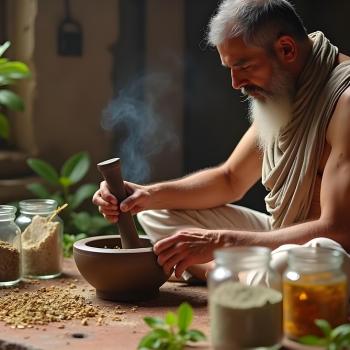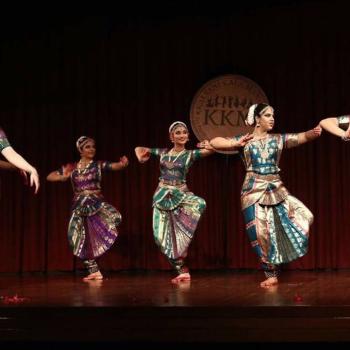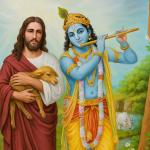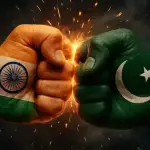
(In this article, I will be using several Samskrit non-translatable words. However, for the benefit of the reader, I will also show a somewhat similar word in English in the parenthesis, which obviously would not be the exact meaning).
Introduction
For a long time, there have been repeated attacks on Indian civilization from all ten directions: that it does not treat women fairly, that it exploits them, suppresses them, discriminates against them and that they have no rights etc.
These attacks mostly come from the leftists as well as from the practitioners of some non-Sanatani religions who believe in ‘my way is highway’ and from those who themselves do not consider their own womenfolks equal, whose own scriptures do not bestow any rights to women and who consider women as mere properties.
There is a popular word found and extensively used in the Indic vocabulary ‘Nari-shakti’, a samskrit non-translatable word, and it roughly means ‘the power of females’, though it does not express the true intended meaning. It is non-translatable because a word in a particular civilization always connotes a certain meaning only if it has been used regularly and is transported due to its popular use over a period of several generations. If that word is popularly used, it is certainly because its usage is accepted by the society at large.
Perhaps, such a word exists in no other major civilization.
Hindus celebrate ‘Durga puja’, ‘Navaratri’ etc. which are nothing but worship of the ‘Female-forms’ of Paramatma/Brahman (Superconsciousness, Supreme God).
Those who follow ‘shakta-pantha’ in Hindu dharma consider ‘Devi-Mahatmya’ shastra (scripture) almost as sacred as ‘Shrimad Bhagwad Gita’. Some of the other shastra-s that they revere are ‘Shrimad Devi Bhagwat’, ‘Kalika Purana’, ‘Devi Upanishad’ etc.
As per the Vaidik or Sanatana darshan (philosophy), Paramatma/Brahman manifests in many forms, including Female forms. Our shastra-s do not state who is superior or inferior between a male and a female. In fact, every creation of Prakruti defines its superiority or inferiority based on its individual ‘Guna-Karma’ (merit-actions).
What do our Shastra-s say ?
I would like to share with the readers in this article what our various shastra-s have to say about the status of females in our civilization.
यत्र नार्यस्तु पूज्यन्ते रमन्ते तत्र देवताः ।
यत्रैतास्तु न पूज्यन्ते सर्वास्तत्राफलाः क्रियाः ॥3.56 ॥
Where women are respected, Devata-s (God-s) reside there, whereas if the women are not respected, none of the actions result in fruition.
शोचन्ति जामयो यत्र विनश्यत्याशु तत् कुलम् ।
न शोचन्ति तु यत्रैता वर्धते तद् हि सर्वदा ॥ 3.57 ॥
Where women endure unhappiness, that family gets destroyed; however where they are happy, that family gets enriched.
जामयो यानि गेहानि शपन्त्यप्रतिपूजिता: ।
तानि कृत्याहतानि-इव विनश्यन्ति समन्तत: ॥ 3.58 ॥
The families where women are not respected, those families by the curse of the sufferer, are completely destroyed as if trapped in some magic net.
तस्मादेताः सदा पूज्या भूषणाच्छादनाशनैः ।
भूतिकामैर्नरैर्नित्यं सत्कारेषूत्सवेषु च ॥ 3.59 ॥
Therefore, those men who wish for their own well-being may always respect the women and during festivals, offer them jewelleries, clothes and the most delicious food.
सन्तुष्टो भार्यया भर्ता भर्त्रा भार्या तथैव च ।
यस्मिन्नेव कुले नित्यं कल्याणं तत्र वै ध्रुवम् ॥ 3.60 ॥
The families where husband and wife are happy with each other, happiness always stays there forever.
(Manusmriti: 3.57-3.60)
उपाध्यायान् दश-आचार्य आचार्याणां शतं पिता !
सहस्रं तु पितॄन् माता गौरवेण-अतिरिच्यते !!
One Acharya (more than a teacher, who is a role model) is 10 times more glorious than one Upadhyaya (teacher), one father is 100 times more glorious than one Acharya, but one mother is 1000 times more glorious than one father.
(Manusmriti 2.145)
चतुर्णामपि वर्णानां दारा रक्ष्यतमा: स्मृता: !
All shastra-s pronounce that all four Varna-s (Classes viz. Brahmana, Kshatriya, Vaishya & Shudra) must provide protection to women.
(Manusmriti 8.359)
स्त्री हि ब्रह्मा !
Woman IS Brahma.
(Rugveda 8.33.19-Gems from the Vedas by Anand P. Arya, pg 72)
सम्राज्येधि पत्युरस्तं परेत्य !
Hey Devi, please come to this house of your husband and live here like a queen.
(Atharvaveda 14.1.43-Gems from the Vedas by Anand P. Arya, pg 70)
ब्रह्मणस्पते पतिमस्यै रोचय !
Hey Prabhu (God), please make the husband ‘lovable’ by his wife.
(Atharvaveda 14.1.31-Gems from the Vedas by Anand P. Arya, pg 70)
Raising of the daughter must be done with great perseverance and loving care.
(Mahanirvana Tantra 8.47-Great Women of India XV)
All the sides of the knowledge are but facets of Paramatma; and all the women of the world are manifestations of This Paramatma.
(Devi Mahatmya 11.6-Great Women of India XV)
I only have created this Planet and the Swarga (Heaven) and I only maintain it while residing in it.
Eternal and Infinite I am. Every particle of my creation I dwell in.
(Devi Suktam, Rigveda 10.125.3-10.125.8)
We can find hundreds of such mantra-s and shloka-s in our shastra-s.
In Vaidik times, women not only held equal status as men, but there were many who were scholars and were highly competent to carry out the duties of priests and were able to perform yagya (fire sacrifice), vrut (religious observance) etc. Ghosha, Shashwati, Vishwatara, Maitreyi, Lopamudra, Gargi, Apala, Romasha etc. were in very high esteem equivalent to today’s deans of Universities. They were amongst 21 female rishis (seers) who were contributors for Rigveda.
During the shastratha (debate related to sacred texts) between Jagadguru Adi Shankaracharya and Buddhist monk Shri Mandan Mishra, it was Bharatidevi, wife of Shri Mandan Mishra who played a role of referee. When Shri Mishra was defeated by Adi Shakaracharya, it was the turn of Bharatidevi to engage Adi Shakaracharya into debate and she gave a very tough fight to him before conceding defeat in the debate.
For thousands of years, we had very able and competent female rulers/queens all across Bharat. There are many instances where these female queens fought battles against invaders and many times were victorious as well. If one were to make a list of sadhvis-s (renunciates), female spiritual leaders, it could be huge as well.
In Sanatana tradition, both the sons and daughters had equal rights on the parental properties and it was only during the British rule that their rights got eclipsed by the viciousness of their policies.
No doubt that during the vast civilizational epoch such as that of ours, at some point in its expanse and in some pockets in its massive geography, some discrimination, some exploitation and some oppression of women did take place but the most important point to note is that not a single shastra has ever supported such treatment of women. By and large, the beginning of some social practices such as ‘child-marriage’, ‘ghunghat-practice (covering of faces)’ must be attributed to the barbaric, extremely inhuman and gory practices of the Islamic invaders. However, these practices started and are limited only to some parts of North Bharat, mainly Rajasthan, in some parts of Uttar Pradesh, Bihar and Bengal, obviously the most affected parts of Bharat and you find no such instances anywhere else.
What I must emphasize here is that nowhere do you find any support from any shastra for ill-treatment or discrimination against women. In fact Hindu society has always respected without any qualms and revered female leaderships in every field of life, be it in the vyavaharik (mundane) or paramarthik (spiritual) realm. The most demonized Sanatani shastra, Manusmriti, has several gems (quoted above) advocating for respecting and taking great care of women by the family members.
In Ten Misconceptions About India and Indic Traditions, Arvind Sharma of McGill University challenged several long-standing misconceptions about India and its religious and cultural traditions. Many Western Indologists as well as several Indian leftists have claimed that Sanskrit was only for Brahmin men and that women were excluded from studying it, but this view is incorrect. Several Buddhist and Jain texts were written in Sanskrit, and women also authored significant works in the language. As he points out:
They are the authors of several poems and even epics, and one poetess, Vijjika (eighth century), in a verse, compares herself favourably even to the goddess Sarasvati. A medical treatise written by a woman was translated into Arabic in the eighth century by the order of Caliph Harun. Her Arabized name is given as Rusa.
Conclusion
The reason I wrote this article is that whenever there is an attack on us by the ‘others’ (those who do not practice Hindu dharma), sometimes out of ignorance and at other times, with viciousness in their minds, we must be able to respond to them adequately with facts and references. If we want to defend our civilizational traditions and values, then the most important qualification is the knowledge about it. That will help us take pride in our identity and challenge those who despise our shastra, such as Manusmriti, by adequately responding to them.
And, to protect our civilization, we need to keep alive our own identity.
Udit Shah
Email: [email protected]













